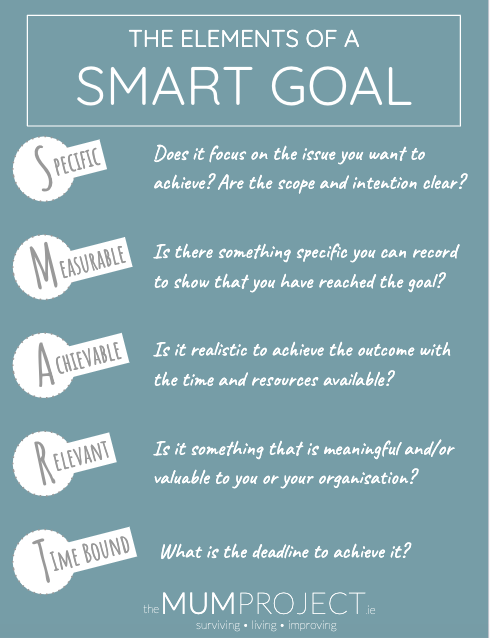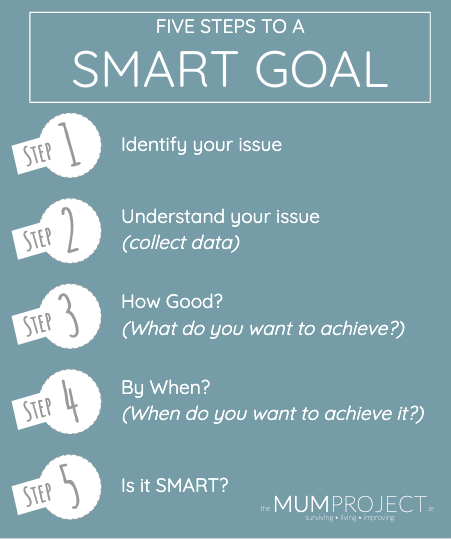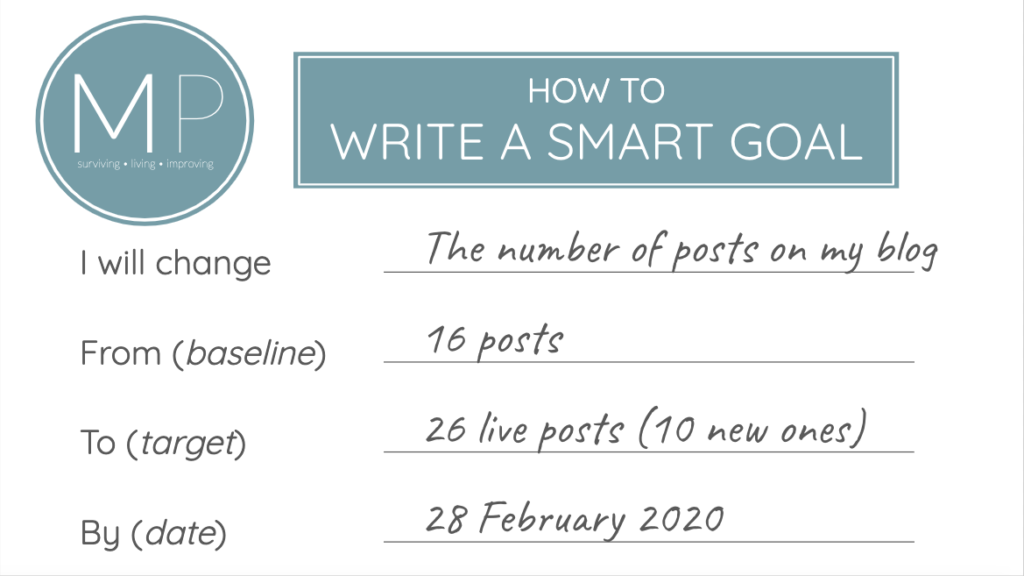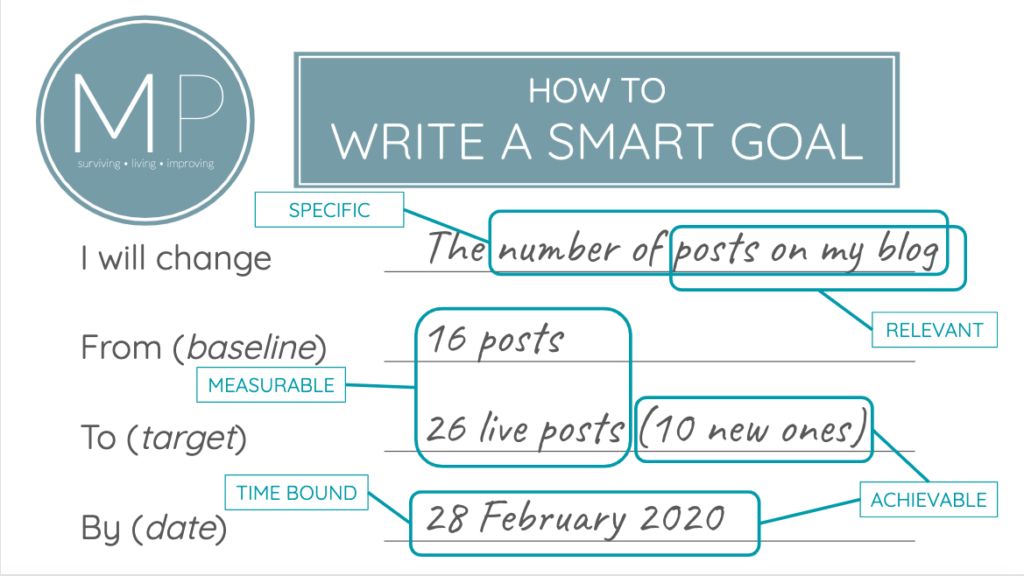How to Achieve Your Goals in 2020
A belated Happy New Year! I deliberately stalled this post until today as I’ve been a little overwhelmed by the amount of “New Year, New You” posts on social media. Now that a lot of the hype about resolutions has died down and real life kicks off again tomorrow, I wanted to show you how you can turn your resolutions into reality this year.
This is less of a New Year, New You post and more of a Turn Your Resolutions into Reality post
If you’ve read my about me page, you’ll know that in real life I work as an improvement consultant and coach. I help people to design projects, set goals and crucially, to actually achieve them by testing small changes over time.
New Year’s Resolutions are great. Having an intention to improve something or make a change in your life is a terrific, really positive thing! However, most intentions are not measurable, and things that are not measurable are really difficult to achieve.
This year, to maximise the chance of actually achieving those intentions, I’m setting New Year’s Goals. I’ve decided to use my improvement skillset to translate my New Year’s Resolutions into tangible goals that can be measured and tracked over time.
I like to think of New Year’s Resolutions as projects that haven’t got aims yet.
In this post I’ll explain what a SMART goal is and share my Five Steps To Turn Your Resolution into a SMART Goal!
What is a SMART goal?
Infographic describing elements of a SMART Goal
The elements of a SMART goal
Specific
Does it focus directly on the issue you are trying to achieve? Is the scope and intention clear?
Measurable
Is there something specific you can record to show that you have reached the goal?
Achievable
Is it realistic to achieve the proposed outcome within the timeframe and with the resources available?
Relevant
Is this goal something that is meaningful and valuable to you or your organisation?
Timebound
Is there a deadline to achieve it?
Ok, so let's talk about how to turn Resolutions into SMART Goals?
A SMART aim statement is the central part of any project. It contains information on where you’re coming from and where you’re going to. It’s how you turn your problem into an actionable goal.
So let’s get started with my five step process to turn those resolutions into reality!
Five Steps to a SMART Goal!
Five steps to a SMART Goal
Step 1. Identify Your Issue
It’s January and most of us have just spent the last few weeks overindulging and out of routine. If you’re anything like me you probably have lots of ideas for things that you would like to improve.
One of my resolutions is to get more posts live on the blog, so my issue looks like this:
I want to get more posts live on my blog.
Take a look at that long list of New Year’s Resolutions that you have in mind and for now, just pick one thing that you want to improve. Just one thing that is important for you to achieve this year!
Step 2. Understand Your Issue
To see improvement, you need to know where you are starting from. We call this the baseline.
So think about how you can measure your goal and understand where you stand with that right now:
Right now on the blog, I have 16 published posts.
For example, if your goal is to lose weight, you need to know what you weigh today to enable you to set a realistic target to aim for.
Maybe your goal is to get more sleep, you could measure that in hours or minutes.
Perhaps you want to get in shape, you could measure how far you can run without a break, or body fat % or kgs.
Maybe you finally want to get your baby to sleep through the night, we measure that by the number of wakes between 7pm and 6am.
Your goal has to be measurable or you will never know if you have achieved it!
Step 3. How Good?
How Good do you want to be? i.e. what you want to achieve?
Right now on the blog, I have 16 published posts. So I think I’ll aim to add 10 more posts:
I want to get 10 additional blog posts live on my blog.
Now we’re getting somewhere! 10 more posts is a clear “how good”.
Step 4. By When?
Next, we need to establish “by when”. Adding an end point is crucial; it gives a sense of urgency and focuses your efforts. Without a date to aim for, things have a habit of getting forgotten about and deprioritised.
I want to get 10 additional blog posts live on my blog by the end of February 2020.
This is ambitious, but I love writing posts, so I’ll aim for this tight deadline!
Step 5. Is it SMART?
Now that we have converted the resolution into a structured aim/goal and have an idea of what we want to achieve, let’s ensure that it hits all of the SMART criteria.
I want to get 10 additional blog posts live on my blog by the end of February 2020.
I’ve used my SMART goal worksheet as a framework to check that I’ve hit all the SMART criteria:
SMART Goal Worksheet
This goal hits all the SMART criteria (woohoo)!
Specific (it refers clearly to the number of live posts on my blog)
Measurable (I can easily count the number of live posts as I publish them)
Achievable (it’s ambitious, but I reckon I can do it)
Relevant (I’m trying to get the blog up and running, so this is definitely relevant to me) and,
Timebound (I’ve set a deadline of the end of February).
My goal is SMART (hurray!) Why not follow me on instagram to see how I got on!













